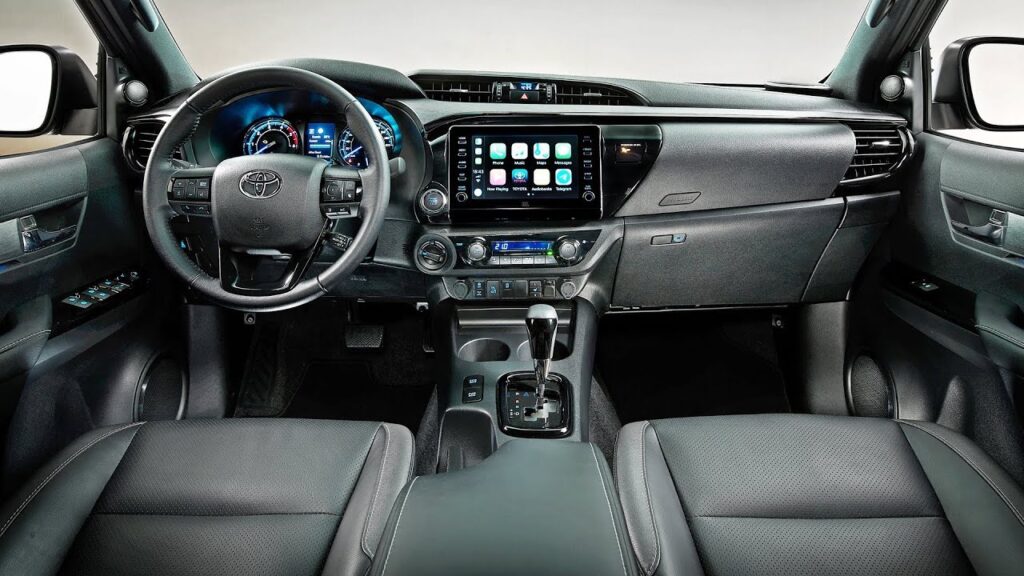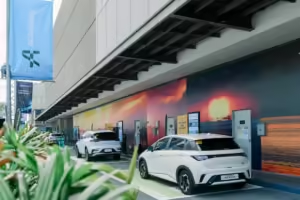TECH NEWS | Blockchain-driven mobility solutions on the road to mass adoption
The rise of connected vehicles that use 5G to coordinate with IoT-linked platforms is setting the stage for a paradigm shift in how mobility and transport providers.

Source: Toyota
By Joe Hwang
head of North Asia, TZ APAC
There’s a quiet revolution happening in the mobility and transport sectors. Where once trains, planes, and automobiles were the assets to hold, now it’s the data these mobility and transport assets produce that’s become the most valuable.
By now, most of us have embraced ride-sharing apps like Uber or Grab and experienced the ease of use that comes with a network of individual drivers vying for our ride. Yet it’s worth remembering that the ride-sharing apps we’re all so fond of own precisely zero percent of the physical infrastructure needed to get you from point A to point B; Grab doesn’t own any significant fleets of cars. Uber doesn’t build roads.
At their core, these services are data businesses that solve inefficiencies in the transport and delivery of people and goods and provide easy and secure platforms for their demand-side audiences to pay their supply-side networks.
Add to this the rise of connected vehicles that use 5G to coordinate with IoT-linked platforms, and it sets the stage for a paradigm shift in how mobility and transport providers value the data their assets and offerings produce.
The sheer volume – and corresponding value – of data originating from mobility and transport cannot be over-emphasized. Everyone from governments to vehicle manufacturers, logistics companies, defense forces, and even insurers wishing to give their customers more options on their vehicle insurance premiums can utilize this kind of data to optimize their operations and build better, more efficient systems.
As more vehicles start to store, receive, and transmit data, a vast opportunity tinged with elements of risk looms. The reams of data vehicles can accumulate, from driver actions to passenger routes, vehicle servicing records, road conditions, even transactional data, need to be organized, transmitted, and protected in equal measure. And it’s in this data-laden space that the sector is exploring and implementing blockchain technologies.
Innovation on the move
For the sector’s entrepreneurs, blockchain beckons as a way to solve inefficiencies and deliver value for consumers and businesses alike. Irish company BloX.move’s Mobility Blockchain solution connects mobility service providers like public transport, corporate mobility managers, and micro-mobility suppliers on a single platform that combines distributed ledger technologies with digital identities to ease traveler journeys from A to B with a single ticket.
In Southeast Asia, TADA, a blockchain-powered ride-hailing app that has already attracted over a million users, uses an incentive-based blockchain mobility ecosystem called a ‘mass vehicle ledger’ to connect the majority of the ride-hailing ecosystem, including riders, drivers, vehicle servicing suppliers, auto manufacturers, and retailers.
The company behind TADA, MVL Foundation, aims to create an ecosystem driven by trust and mutual benefit underpinned by blockchain. All ride data is gathered on a central database and available to everyone within the ecosystem. As an incentive for friendly, safe, and reliable service, drivers are awarded ‘MVL Points’, and riders can be granted a fixed rate for accurate usage reviews. These points are exchangeable for ‘MVL Coins’, which can be used as a form of payment with TADA’s ecosystem.
In the hunt for greater efficiencies in blockchain transaction fees, MVL recently partnered with TZ APAC, the leading blockchain adoption entity for the Tezos ecosystem in Asia, to onboard the Tezos public blockchain and expand its data business. Unlike Proof of Work (PoW) networks such as Ethereum and Bitcoin, Liquid Proof of Stake (LPoS) blockchains like Tezos require fewer computers – working less hard – to maintain the network, making it far more energy-efficient and greatly lowering the ‘gas’ fees to process transactions.
MVL also plans to shake up the mobility sector by manufacturing sustainable electric vehicles like the E-TukTuk, a passenger tricycle ideal for the busy streets characteristic of Asia’s densely populated urban centers.
While it’s still early days, blockchain-based mobility economic ecosystems like what MVL envisions, may be the norm in the not too distant future, especially if the vast ocean of mobility data is accessible to auto manufacturers, governments, and retailers. It’s reasonable to assume these lynchpin players in the mobility and transport sectors see more value in the data itself than the slightly gamified system of value exchange end-users will take part in.
Soon, it may be possible to stroll into your nearest dealership and pay for your new ride with a cryptocurrency like MVL Coin, drive on roads and in conditions greatly improved by insights derived from ecosystem-wide and shared mobility data, and contribute to the virtuous cycle of the ecosystem by going about your daily business.
It’s an enviable thought and one that reflects blockchain technology’s promise in a connected, web 3.0 world.


